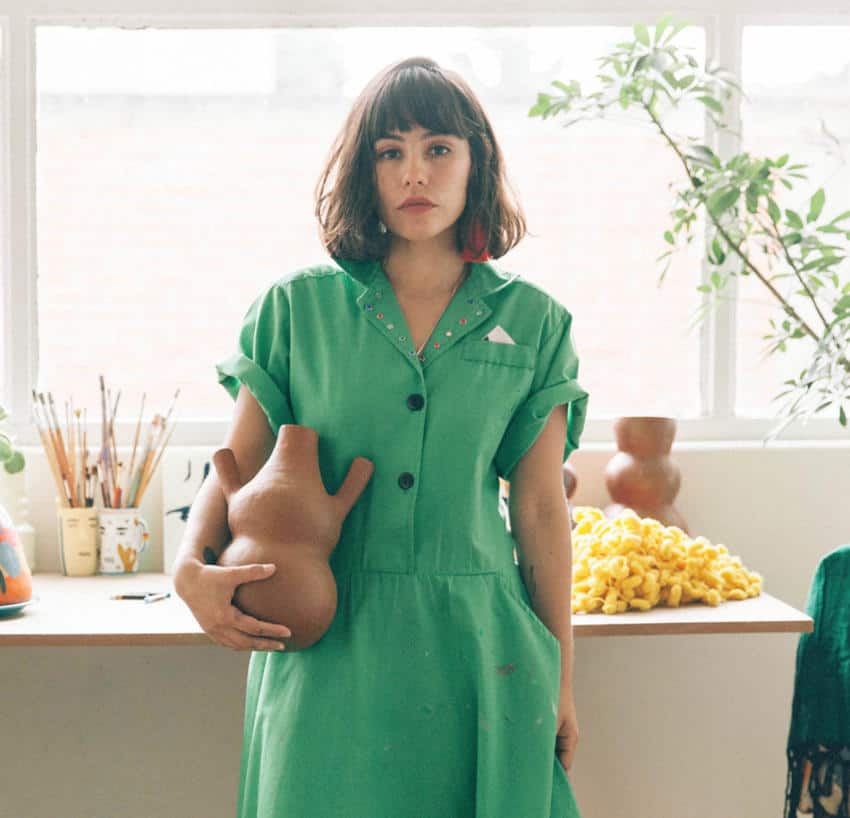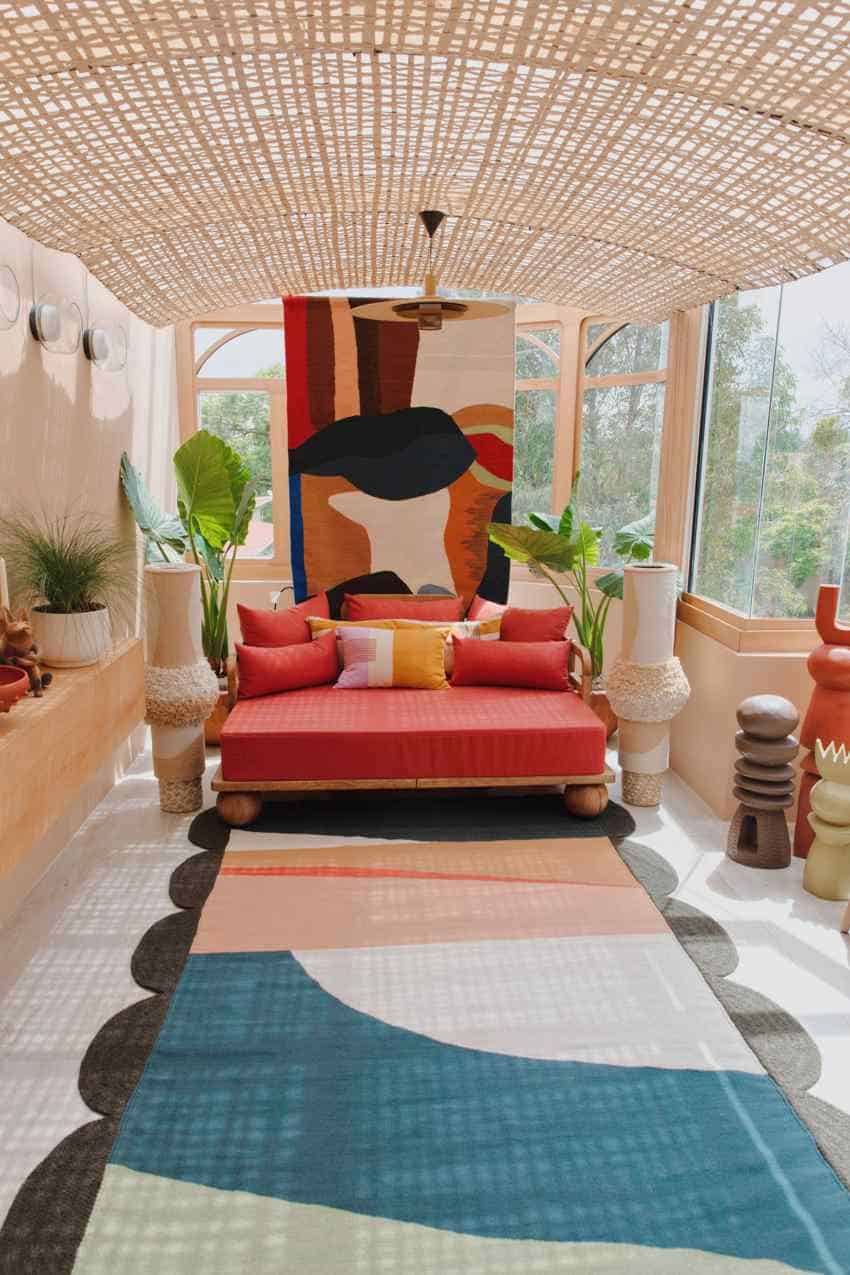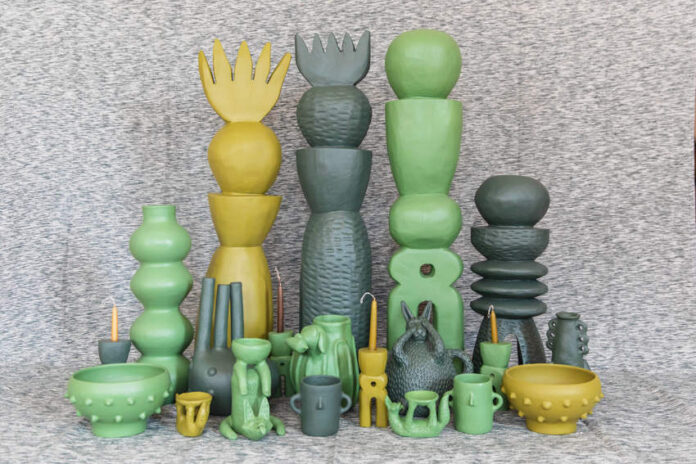Seven years ago, after several years in public service, Mexican visual artist Melissa Ávila began crafting a vibrant universe that honors Mexico’s millennia-old artisanal traditions, utilizing a diverse array of materials from Mexico’s handcrafting traditions — including wool, clay, wood, palm, minerals, volcanic stone, cardboard, ceramics, tin, iron, cotton, paint and jute.
Her goal was to create art and artistic decor objects for different spaces using these traditional materials.

The result of her work toward this goal is the M.A Estudio initiative, a studio that brings sculptures, carpets and other art objects to life, celebrating modernism, Mexico’s traditions and design.
“The magic of M.A. [Estudio] is that it was born intuitively, without overthinking, and evolved through exploration and experimentation,” Ávila told Mexico News Daily as she sat recently down to discuss her Mexico City studio.
One of Ávila’s primary objectives is to foster collaborative projects while preserving traditions and honoring artisanal heritage and processes. So M.A Estudio operates on a collaborative model based on building long-term relationships with traditional artisans.
“To me, fair trade implies a 360-degree approach: It must be fair to those who create, produce, sell and buy it. It must be viable and functional for everyone,” Ávila said.
M.A Estudio emphasizes the value of handmade items and the traditions that produce them.
“We love artisan processes, not just working with artisans. We cherish everything related to crafts, handmade work, artisan culture and traditional processes.”
View this post on Instagram
For Ávila, handmade processes are intimately tied to the earth and to culture. They highlight identity, natural resources and the region in which they were created.
Long-term relationships with artisans
Since its inception in 2017, one of M.A Estudio’s strengths has been its long-term collaboration with five artisan families based in regions known for their rich artisanal traditions, including Oaxaca, Chiapas, Guerrero, Puebla, Michoacán and Mexico State.
When it comes to the creative process, Melissa maintains an open mind. While she designs most pieces, certain series are created in collaboration with artisans.
“The studio is a space where I envision us all fitting together, so we are open to new collaborations and techniques. There is always a spirit of transformation, and we are adaptable to meet evolving needs,” she said.
The GEEL series is one such collaboration: It was designed with members of the Michoacán Purépecha community known as the Zipiajo. The series features a technique that smooths clay using materials like mud, fine black sand and red earth, known as charanda, for its final finishing touches.
“Many other collections feature my designs, which artisans appreciate, allowing us to create prototypes together. Sometimes, I’m hired by associations, NGOs and other institutions to mentor artisan groups,” Ávila explained.
Values make the difference
It’s important to avoid generalizing or romanticizing Mexico’s artisan sector, Ávila said, while also supporting the community and recognizing its complexities
“Mexico has an abundance of talent. It is a vast country and we must continue to seek ways to promote this heritage,” she said.

M.A Estudio also provides opportunities for creators to design their own products and produce them with the handmade team, giving them access to a stable income. They can rely on M.A Estudio for the entire design and production process.
“For me, the future is collaborative at any level,” Ávila said.
She is pleased to observe a growing public interest in understanding where products originate, she said.
“The goal for us as consumers is to become more aware of our purchases, to comprehend their origins and to acknowledge their impact on the planet and the people who create them,” she said.
With its unique designs, created using ethical practices, M.A. Estudio departs from the common practice of merely reselling handicrafts, instead integrating a thoughtful design process that is deeply connected to communities. The result is a stunning collection that brings joy and elegance to spaces.
You can find full links to their work here.
Ana Paula de la Torre is a Mexican journalist and contributor for Milenio, Animal Político, Vice, Newsweek en Español, Televisa and Mexico News Daily.
